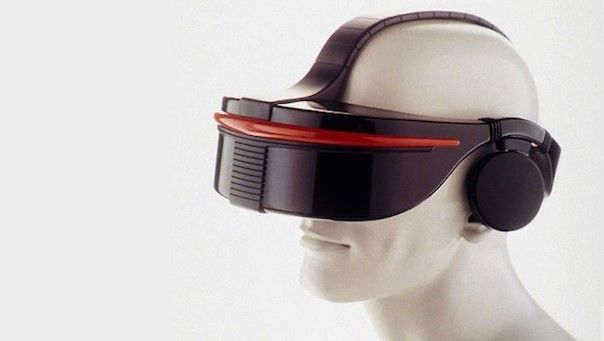
Wow, this VR malarkey has been a long time coming. From its initial designs in the 1960s to the misguided attempts to peddle a technology that wasn't quite ready, or affordable, for the mainstream commercial market, virtual reality has travelled a rocky road. Ironically, some of the biggest flops in VR weren't down to the technology failing the vision - as you'll see, some offerings were genuinely ahead of their time and simply didn't catch on, ushering in their inevitable return to the drawing board.
Virtual Boy
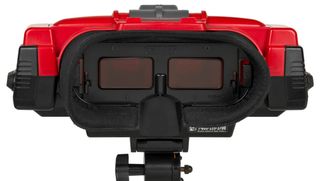
Back in 1995, when God was a boy and videogames were about to make the commercial leap to 3D, Japanese industry giant Nintendo was ready to repeat its success it had enjoyed with the handheld Game Boy earlier in the decade. It's new beau? The Virtual Boy. A head-mounted VMU and a bespoke game pad would bring Nintendo's beloved gaming franchises to a whole new platform.
Gunpei Yokoi, the creator of the Game Boy and the Game & Watch systems was the man behind it and he couldn't stop singing its praises. The company poured untold investment into its development, certain it would sell big numbers and become just as revolutionary and commercially successful as the Game Boy. Sadly, the reality wasn't so rosy for the House of Mario.
With its 384 x 224 resolution and 16-bit audio it was competent technology by itself (Nintendo were even planning a Star Fox game for VB), but with a 14,000 yen/$179.99 price tag the Virtual Boy unceremoniously tanked. Only 770,000 units were ever sold and a mere 140,000 were picked up by American customers. It was a commercial flop for the company, but it only took the company another four years to top it with the misguided N64 add-on, 64DD.
VRML

Ahh, 1995 - the year of VR failure. While Nintendo's Virtual Boy was fast becoming the a critical laughing stock, another attempt to bring VR to the masses by an altogether different avenue was trying to find traction. That idea was VRML (or Virtual Reality Modeling Language) and was an attempt to provide a 3D-space alternative to HTML.
The core concept was to have a file format that exchanged flat web pages for three-dimensional vector graphics - so effectively creating an interactive, explorable virtual space where information could be shared and connections made with other users.
It was a nice idea, but the slow upload and download rates of mid-'90s dial-up connections meant that the web simply wasn't ready for a technological leap so soon after another technological leap in the Internet itself. It eventually evolved into X3D, a file format still available today, and is seen as something of a precursor to the success of 3D social platforms such as Second Life.
Sign up to the T3 newsletter for smarter living straight to your inbox
Get all the latest news, reviews, deals and buying guides on gorgeous tech, home and active products from the T3 experts
VirtuSphere
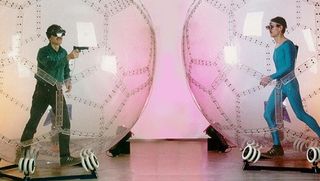
As VR started to bleed its way into popular culture at the end of the '80s and the start of the '90s, firms were becoming more concerned with the accessories and peripherals you'd use with VR more than the tech itself. The idea was to break away from the giant plastic thrones you'd normally see in the Virtual Reality Arcade at the Trocadero in London and into interactive, 360 degree controls.
Other than omnidirectional treadmills (we'll get to those in a moment), VR spheres were one such attempt to make virtual reality explorable as well as immersive. The VirtuSphere became one of the most popular designs and was essentially a giant hamster ball on a series of wheels mounted to a frame.
Problem was the issue of latency and decent enough optics was making static VR experiences a challenge at the best of times - adding additional movement tracking was a step too far. Oh, and the hefty price tag (upwards of $4,000 for some models) and the sheer amount of space needed for a giant mesh ball didn't help.
Omnidirectional Treadmills
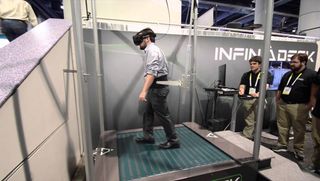
OTs were, at least in appearance, a far more agreeable prospect for active virtual reality sessions when they appeared around 1997. Aimed almost squarely at the gaming market, omindirectional treadmills were all about offering 360 degrees of movement while immersed with a VR headset. The problem was the physical challenge of keeping the user in the middle of the treadmill (so they didn't walk off), but still ensure the sensors recognised the right kind of pressure in the correct direction. This meant huge rigs were needed to make it work, and that meant huge outlays.
Much like the VR sphere, the OTD is making something of a comeback in 2016. The leaps and bounds made in the last decade, and the sheer capabilities of Oculus Rift, HTC Vive and PS VR have seen these models jump back into legitimacy. The successfully Kickstarted Virtuix Omni is one such model - and with its slimmed-down design and $700 price tag, it's a far more agreeable (if still expensive) gaming peripheral.
Power Glove
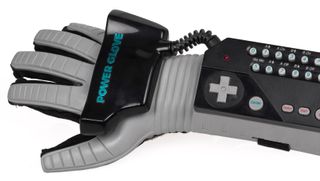
Long before it poured some serious cash into the failiure that was the Virtual Boy, Nintendo tried something altogether different and equally wacky back in 1989. Designed as an accessory for the Nintendo Entertainment System (NES), it was actually designed by toy manufacturer Mattel was created to give players a new way to control your games.
More of cross between the motion controls we saw decades later with the Nintendo Wii and the PlayStation Move, the Power Glove remapped the traditional NES controller to a series of buttons on the forearm while a set of fibreoptic sensors could detect hand movements (which were in turn translated into on-screen commands).
The tech actually worked, but a lack of software (only four bespoke titles were ever developed for it - none of which were ever bundled with it) and a sheer lack of commercial success saw it disappear into obscurity and cult status.
i-Glasses
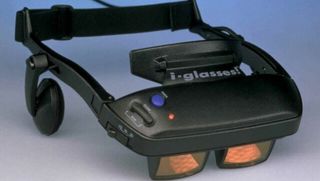
Long before Apple started dropping hipster jaws by prefixing words with the letter 'i', Virtual I/O was slapping it on its own attempt to break into the yet-to-boom virtual reality market. The i-Glasses, which launched in the special, VR-happy 12 months that was 1995, used a stereoscopic 3D, full-colour display and offered 360 degree head tracking.
Early versions showed it in use with a flight simulator and a regular gaming joystick and PC and its creators even said it could be used for watching films at home with a screen comparable to an 80-inch cinema screen. Sadly, it struggled with serious latency issues and at a cool $1,000 a headset - it simply didn't make a dent on a market some were tipping to turn into a multi-billion dollar industry by 2000.
Why not check out: Hands-on HTC Vive review: It still looks better than Oculus Rift to us
Dom Reseigh-Lincoln has been writing for T3 for over half a decade now, covering everything from mobile phones and laptops right through to video games and gaming peripherals. Purveyor of an excellent beard, as well as some perpetually cheeky offspring, Dom likes to wind down in his spare time by listening to heavy metal.
-
 New Biver Carillon Tourbillon Desert Rose is a stunning example of luxury watchmaking
New Biver Carillon Tourbillon Desert Rose is a stunning example of luxury watchmakingIt features all manner of exotic materials
By Sam Cross Published
-
 My favorite gas barbecue is now under $150 in the Amazon Big Spring sale
My favorite gas barbecue is now under $150 in the Amazon Big Spring saleSave $100 on this Master Cook gas grill in Amazon’s spring sale
By Bethan Girdler-Maslen Published
